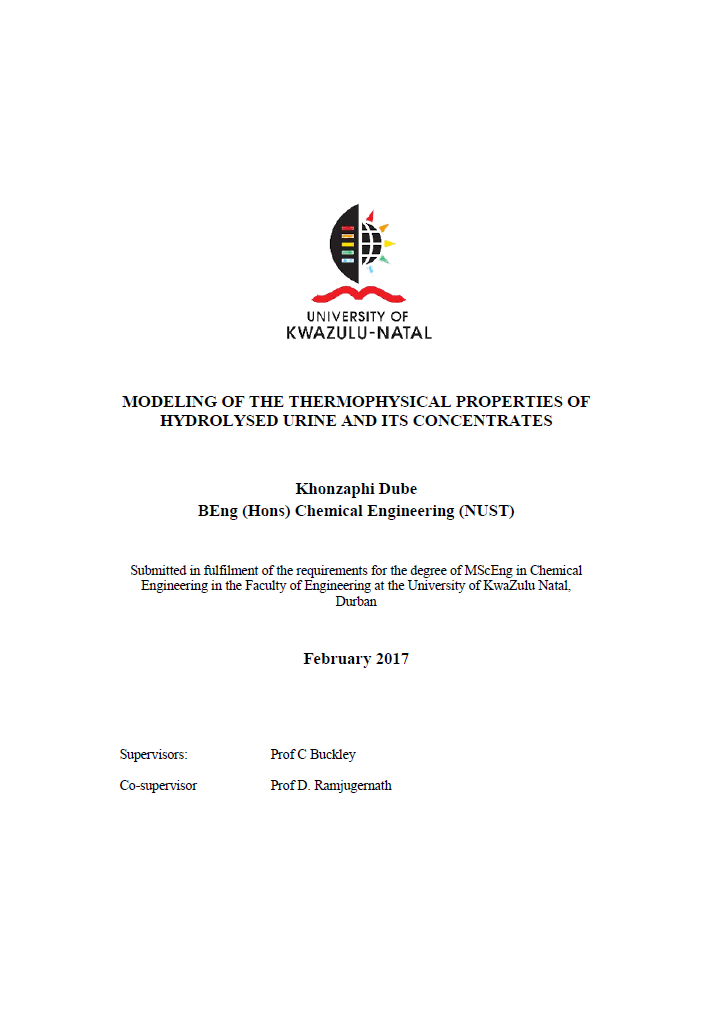Modelling of the Thermophysical Properties of Hydrolysed Urine and its Concentrates Master thesis from the Pollution Research Group, at the University of KwaZulu-Natal (Durban, South Africa) Dube, K. (2016)
Bibliographic information
Dube, K. (2016). Modelling of the Thermophysical Properties of Hydrolysed Urine and its Concentrates Master thesis from the Pollution Research Group, at the University of KwaZulu-Natal (Durban, South Africa)
Filter / Tags
UrineCase studies in other formatsEnglish
Downloads

Published in: 2016
Pages: 163
Publisher:
Author(s):
Dube, K.
Uploaded by:
UKZN
University of KwaZulu-Natal
Location of library entry:
